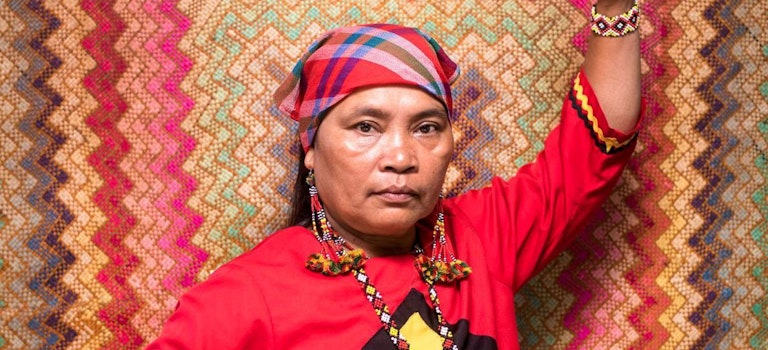One of the ICRC commitments to the International Gender Champions Initiative is to provide more visibility and voice to women affected by war. This feature by National Geographic, supported by the ICRC, takes a closer look at how women deal with the disruption that conflict brings to family and work life in four different countries: Nigeria, Iraq, Philippines and Peru. Women are hardly passive victims, they grieve, they fight against the suffering, and many find they are forced to re-invent themselves, shedding an old identity and forging a new one shaped by war.
In war, women are often forgotten. History relegates their contributions to the sidelines, but they have much more to tell about life under siege. They’re fighters, victims, and breadwinners. They feed their families on rations and protect them in uniform. Here, 20 survivors from across the globe reveal how conflict changed their lives.
NIGERIA
Millions have been displaced by the war with Boko Haram in northeastern Nigeria. The conflict has separated families and destroyed access to basic needs for living, from water to health care. Even in displacement camps safe from the armed rebels, civilians struggle to survive amidst a collapsing economy: Farmers’ fields have been left uncultivated, herders migrations disrupted, and traders’ supply chains cut off.

IRAQ
Since 1980, six conflicts have shattered the social, economic, and political structures of Iraq. Over half a million people have been displaced in the most recent war against ISIS, which seized parts of northern Iraq in 2014. Government forces have slowly weeded out insurgents, allowing thousands of people to return to their barely recognizable cities and homes.

PHILIPPINES
In May 2017, armed groups aligned with ISIS attacked Marawi, the largest Muslim city in the Philippines, and declared it a caliphate. More than 300,000 residents fled into neighboring regions, where they lived with relatives or camped inside evacuation centers. The city was reclaimed five months later, but it will take many years for normalcy to return.

PERU
The violent conflicts of the eighties and nineties left tens of thousands dead in Peru. Rebel groups, including the communist Shining Path, tried to overthrow the government, which utilized armed civilian groups to battle the insurgents. Although the fighting officially ended in 2000, the Shining Path is still active, particularly in a remote area that produces the country’s coca crop, and an estimated 15,000 citizens remain missing.

Find out more about these amazing women here and on the ICRC blog
